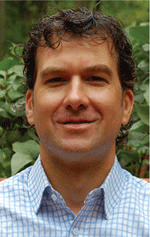Satellite monitoring of fugitive methane emissions from oil and gas facilities in Australia
Jean-Francois GauthierGHGSat, 3981 St-Laurent, Suite 500, Montreal, QC, H2W 1Y5, Canada. Email: jfg@ghgsat.com
The APPEA Journal 60(2) 446-449 https://doi.org/10.1071/AJ19071
Accepted: 23 March 2020 Published: 15 May 2020
Abstract
Since 2016, GHGSat has been operating the world’s first and only satellite specifically designed to monitor methane emissions from industrial facilities around the world. The lessons learned through the success of this demonstration satellite have been incorporated into the company’s next two satellites, the first of which was originally scheduled to launch in September 2019 but was delayed as a result of a rocket failure. The satellite’s technology is ideally suited to the oil and gas industry, particularly unconventional developments in which a high density of facilities can be present. This paper introduces the technology briefly and discusses the predictive analytics applications being developed to augment the efficacy of the satellites in detecting methane emissions. An example of successful application of the predictive analytics engine to detect a methane leak in the Delaware Basin in New Mexico is presented. Parallels are drawn between shale basins in the US and the Surat Basin in Australia, highlighting the applicability of the technology for the oil and gas industry in Australia.
Keywords: artificial intelligence, CH4, climate change, decarbonisation, digitalisation, environment, HSE, machine learning, methane leaks, safety.

Jean-Francois Gauthier is a mechanical engineer and lifelong space geek with over 15 years’ experience in the commercial space industry in various capacities at leading space hardware supplier COM DEV, including design and test, project management and sales and marketing. Jean-Francois holds a BEng from Dalhousie University and an MBA from Wilfrid Laurier University. Jean-Francois is also a graduate of the International Space University’s Summer Session Program (2006). In October 2016, Jean-Francois joined GHGSat to help commercialise the products and services from their breakthrough satellite around the world. In his role as Vice President of Sales and Marketing, Jean-Francois leads the company’s efforts to help the oil and gas industry take on the challenge of addressing climate change, one satellite at a time. |
References
Alvarez, R. A., Pacala, S. W., Winebrake, J. J., Chameides, W. L., and Hamburg, S. P. (2012). Greater focus needed on methane leakage from natural gas infrastructure. Proceedings of the National Academy of Sciences of the United States of America 109, 6435–6440.| Greater focus needed on methane leakage from natural gas infrastructure.Crossref | GoogleScholarGoogle Scholar |
Fletcher, L., Crocker, T., Smyth, J., and Marcell, K. (2018). ‘Beyond the Cycle: Which Oil and Gas Companies are Ready for the Low-Carbon Transition?’ (CDP: London.)
Myhre, G., Shindell, D., Bréon, F.-M., Collins, W. W., Fuglestvedt, J., Huang, J., Koch, D., Lamarque, J.-F., Lee, D., Mendoza, B., Nakajima, T., Robock, A., Stephens, G., Takemura T., and Zhang H. (2013). Anthropogenic and natural radiative forcing. In ‘Climate Change 2013: The Physical Science Basis. Contribution of Working Group I to the Fifth Assessment Report of the Intergovernmental Panel on Climate Change’. (Eds T. F. Stocker, D. Qin, G.-K. Plattner, M. Tignor, S. K. Allen, J. Boschung, A. Nauels, Y. Xia, V. Bex, and P. M. Midgley.) pp. 659–740. (Cambridge University Press: Cambridge, United Kingdom and New York, NY, USA.)
Spelman, M., Ashraf, M., and Weinelt, B. (2017). ‘Digital Transformation Initiative – Oil and Gas Industry.’ (World Economic Forum: Geneva.)
Varon, D. J., Jacob, D. J., McKeever, J., Jervis, D., Durak, B. O. A., Xia, Y., and Huang, Y. (2018). Quantifying methane point sources from fine-scale satellite observations of atmospheric methane plumes. Atmospheric Measurement Techniques 11, 5673–5686.
| Quantifying methane point sources from fine-scale satellite observations of atmospheric methane plumes.Crossref | GoogleScholarGoogle Scholar |
Weather Spark (2020a) Average weather in Chinchilla. https://weatherspark.com/y/144524/Average-Weather-in-Chinchilla-Australia-Year-Round [verified 7 April 2020].
Weather Spark (2020b) Average weather in Midland Texas, United States.https://weatherspark.com/y/4333/Average-Weather-in-Midland-Texas-United-States-Year-Round#Sections-Clouds [verified 7 April 2020].
Zavala-Araiza, D., Lyon, D. R., Alvarez, R., Davis, K., Harriss, R., Herndon, S., Karion, A., et al. (2015). Reconciling divergent estimates of oil and gas methane emissions. Proceedings of the National Academy of Sciences of the United States of America 112, 15597–15602.
| Reconciling divergent estimates of oil and gas methane emissions.Crossref | GoogleScholarGoogle Scholar |


